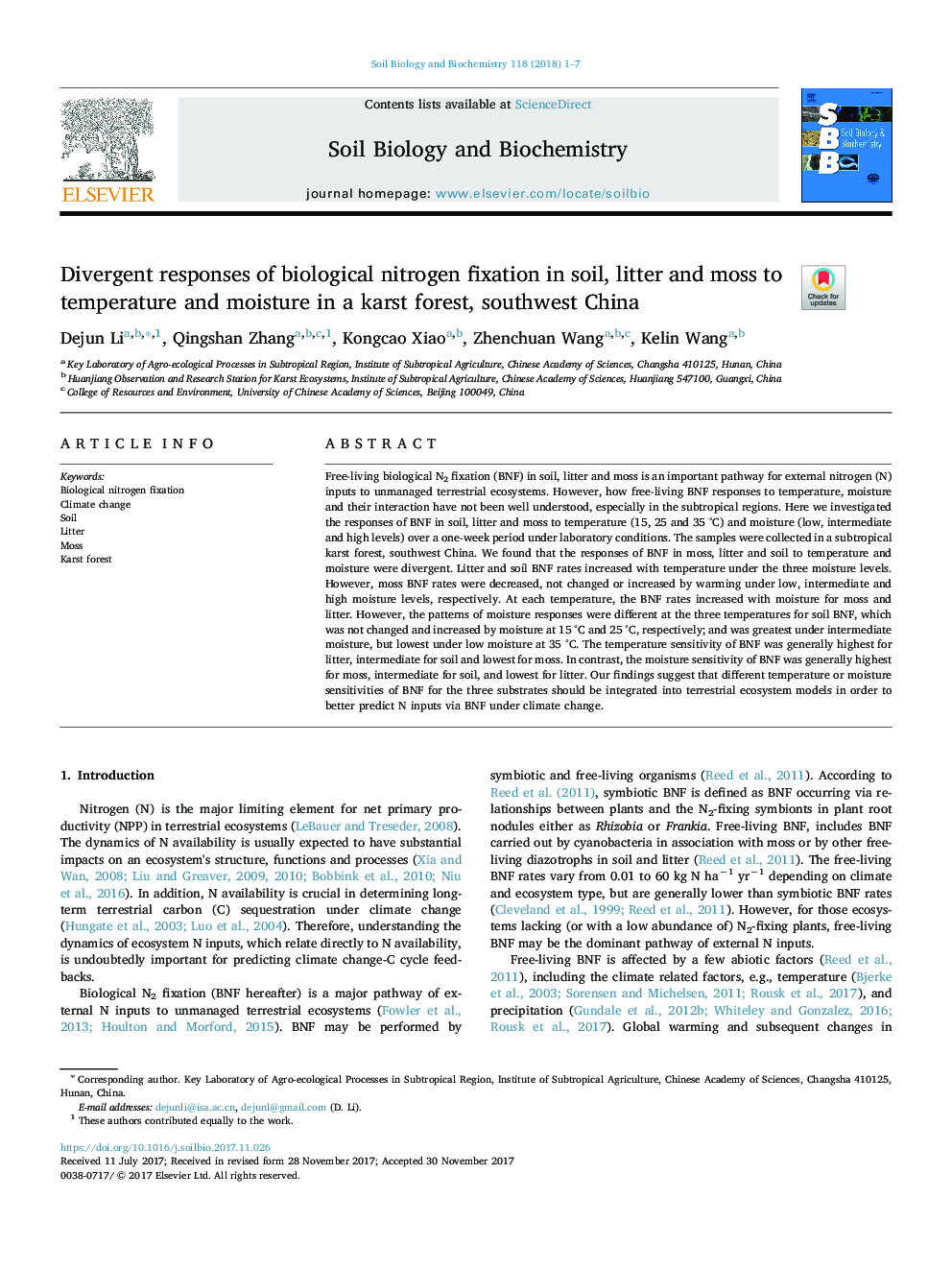| Article ID | Journal | Published Year | Pages | File Type |
|---|---|---|---|---|
| 8362942 | Soil Biology and Biochemistry | 2018 | 7 Pages |
Abstract
Free-living biological N2 fixation (BNF) in soil, litter and moss is an important pathway for external nitrogen (N) inputs to unmanaged terrestrial ecosystems. However, how free-living BNF responses to temperature, moisture and their interaction have not been well understood, especially in the subtropical regions. Here we investigated the responses of BNF in soil, litter and moss to temperature (15, 25 and 35 °C) and moisture (low, intermediate and high levels) over a one-week period under laboratory conditions. The samples were collected in a subtropical karst forest, southwest China. We found that the responses of BNF in moss, litter and soil to temperature and moisture were divergent. Litter and soil BNF rates increased with temperature under the three moisture levels. However, moss BNF rates were decreased, not changed or increased by warming under low, intermediate and high moisture levels, respectively. At each temperature, the BNF rates increased with moisture for moss and litter. However, the patterns of moisture responses were different at the three temperatures for soil BNF, which was not changed and increased by moisture at 15 °C and 25 °C, respectively; and was greatest under intermediate moisture, but lowest under low moisture at 35 °C. The temperature sensitivity of BNF was generally highest for litter, intermediate for soil and lowest for moss. In contrast, the moisture sensitivity of BNF was generally highest for moss, intermediate for soil, and lowest for litter. Our findings suggest that different temperature or moisture sensitivities of BNF for the three substrates should be integrated into terrestrial ecosystem models in order to better predict N inputs via BNF under climate change.
Related Topics
Life Sciences
Agricultural and Biological Sciences
Soil Science
Authors
Dejun Li, Qingshan Zhang, Kongcao Xiao, Zhenchuan Wang, Kelin Wang,
